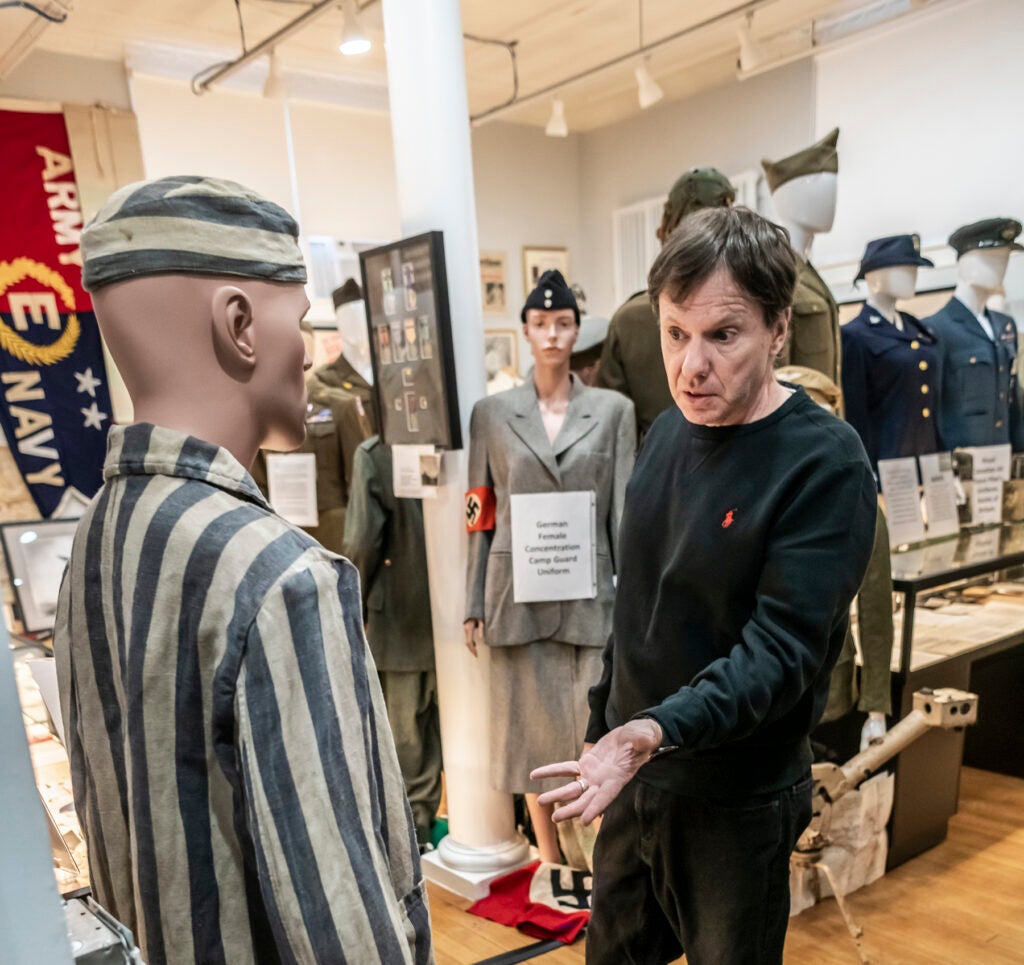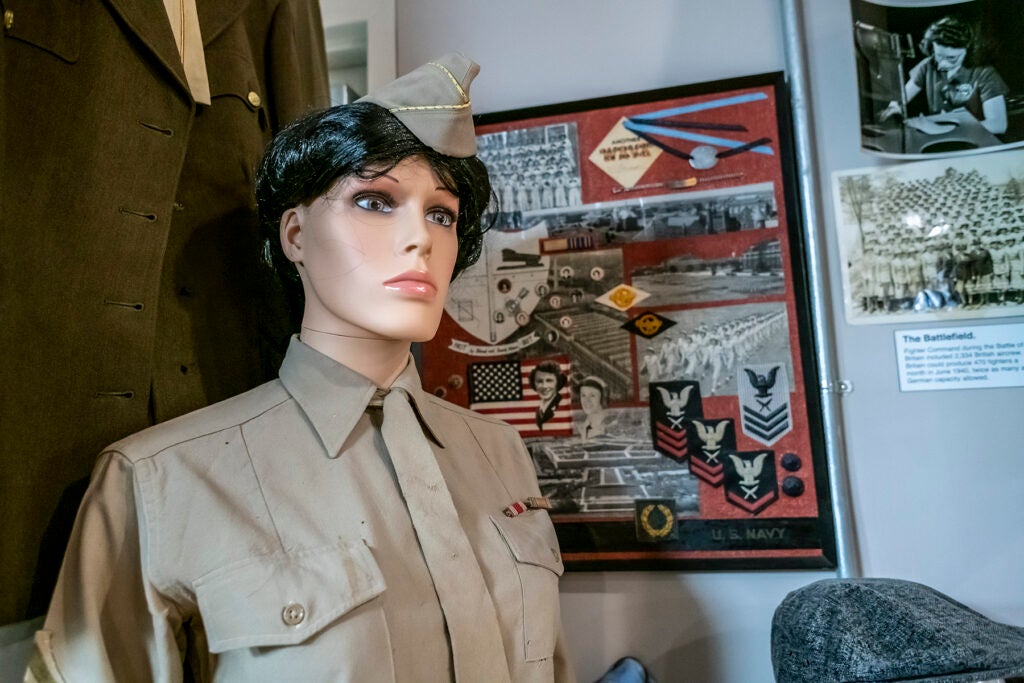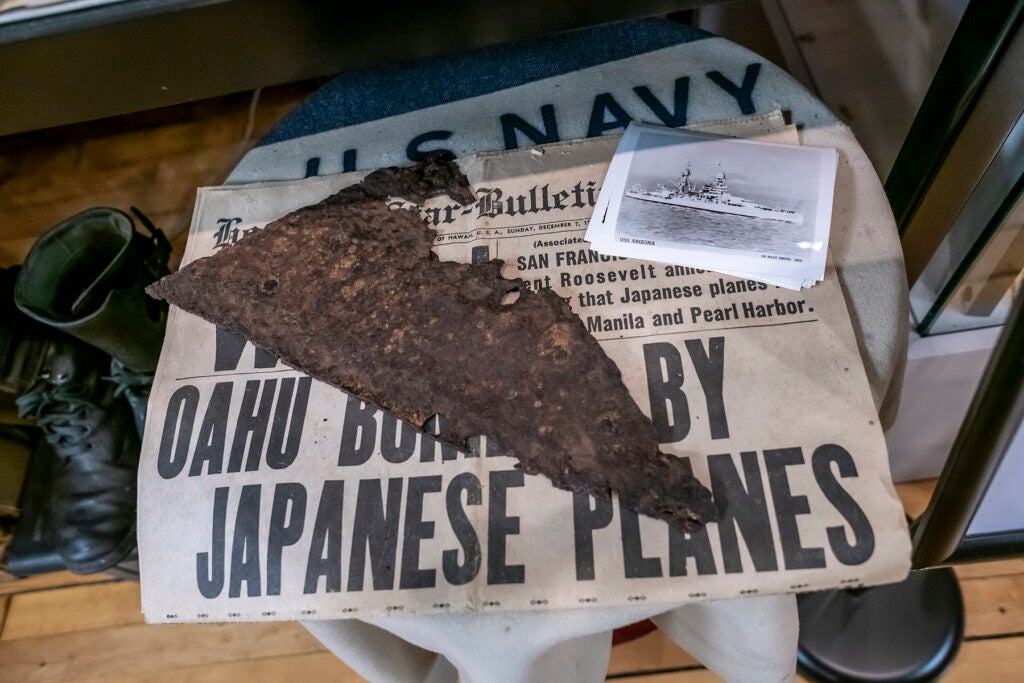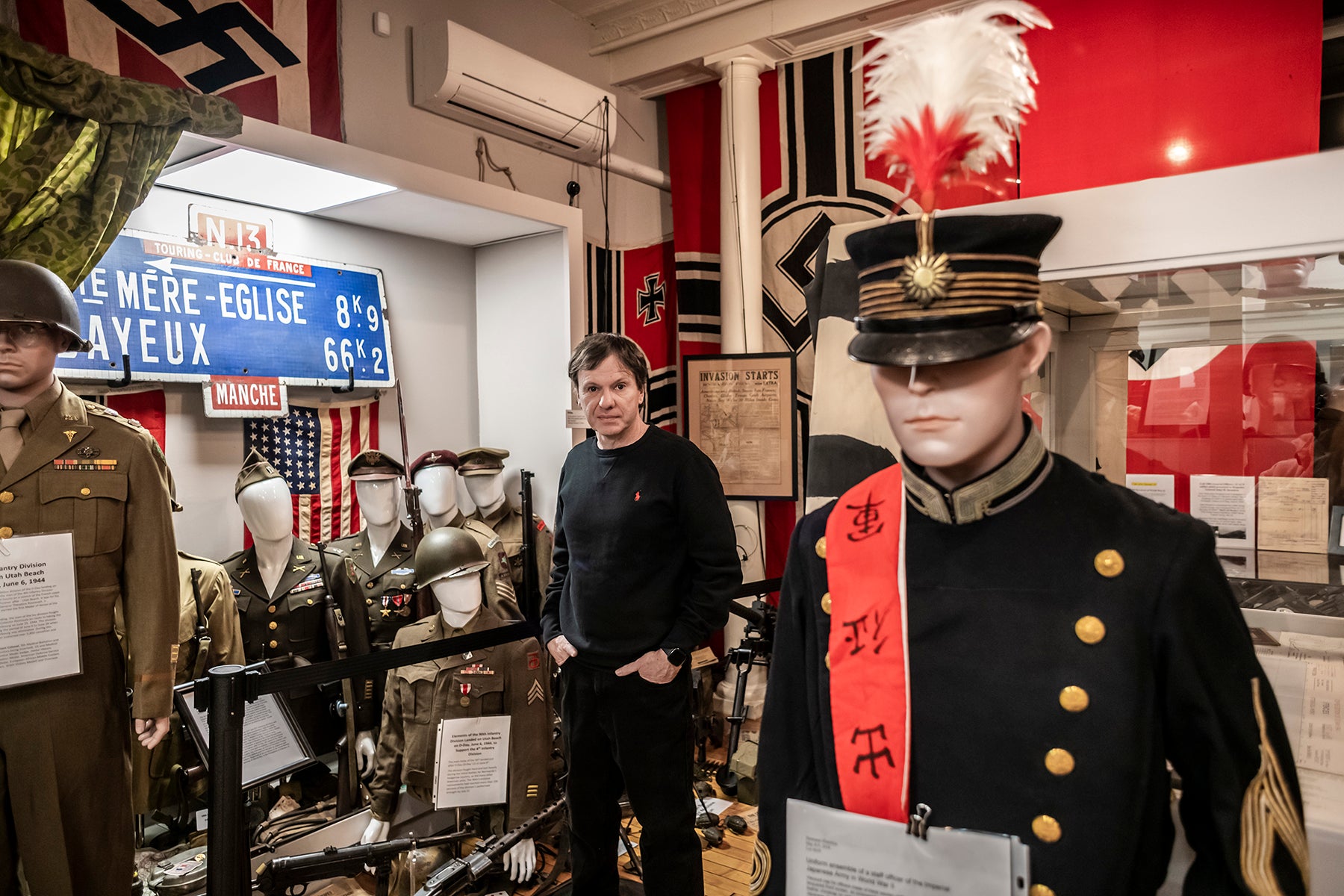KINGSTON, R.I. – Feb. 28, 2022 – With the Russian military invading Ukraine, it’s hard to avoid thinking that another major war in Europe is about to break out.
Around the world, China has come under harsh criticism for reports of its oppression of and violence against Muslim groups like the Uighurs in Xinjiang.
Meanwhile, here in the U.S., most were horrified by the attack on the U.S. Capitol and many fear continuing efforts to overturn elections by the followers of a former president who many critics compare to the leader of a cult.

With so much violence and potential for war, now seems an ideal time to visit the World War II Foundation’s Global Education Center and Museum in Wakefield, watch one of foundation founder Tim Gray’s more than 30 documentaries on World War II that tell personal stories of that generation, and experience his newest creation, virtual reality presentations that allow viewers to stand on the shores of Normandy during the D-Day invasion.
At what has been described as one of the best World War II museums in the world, visitors can see, feel and hear the heroism, fear, selflessness and acts of valor among those who served and those back in the States. But they can also experience the bloodshed, hate and the cult-like following of a leader that allowed millions of Jews to be killed in the Holocaust.
The museum is open Wednesdays and Saturdays by appointment. Children under 12 years old and veterans can visit for free. Regular admission is $10.

“For school groups, the Foundation covers the admission and bus transportation to the museum,” Gray said.
For his contributions to capturing and preserving the history, artifacts and the stories of those who served in World War II, Gray, a 1989 graduate of the University of Rhode Island’s journalism program, was inducted last fall into the Rhode Island Heritage Hall of Fame.
While delighted with that honor and others like American Public Television’s National Programming Excellence Award and Emmy Awards, Gray says the most important thing is that the public visits the museum, tucked in a corner of the former Kenyon’s Department Store at 344 Main Street, watch the documentaries and experience the virtual reality products that he has developed.

“I hope that the museum and my other work help show kids and adults what to watch for today,” Gray said. “This can help people be aware of the warning signs.”
He talked about this as he walked by photos of Jews in mass graves and a mannequin displaying an authentic striped uniform of a young concentration camp worker who made shoes in the camps.
It’s hard to avoid being overwhelmed when you enter the museum. There are displays of uniforms and combat gear that were worn by U.S. soldiers and their allies, and those of the Germans and the Japanese, war propaganda posters filled with hateful depictions of various groups, weapons, and equipment used in Europe and Asia. While big band music and old radio broadcasts play in the background, visitors can read letters of heartbreak and hope sent to and from the war zones, view pictures of young men during wartime and look at and borrow any one of the 600 books lining shelves.
“The museum is three years old, and about 2,000 young people have visited,” Gray said. “Not one kid has been disengaged. They are amazed at the colors, the uniforms. These are tactile exhibits. If a kid wants to put a helmet on, he can. If a girl wants to touch a rifle, like the Johnson 1941 rifle, which was made in Rhode Island, she can.”
Visitors can also crank an air raid siren, see a radio made by a soldier in a Japanese prisoner of war camp, touch a Japanese samurai sword, and a piece of the USS Arizona, the warship that was attacked by the Japanese and remains at the bottom of Pearl Harbor today.
The ceremonial shovel used by Adolph Hitler to break ground on the Autobahn and some of Hitler’s china is on display there, too.
Gray honors the Tuskegee Airmen in a display. He said they were among the best pilots in World War II, and yet they were subject to Jim Crow laws and racism at home and in the service.
A former sports reporter at Channel 10, Gray said he was looking to do work that would inspire him and others after leaving television.
“I credit URI with helping me to make that change, and having a strong journalism background from my time at URI, allowed me to make that seamless transition to a new career. Journalism professors like Linda Levin and Tony Silvia were so important to my development.
“But the best class I took was the Holocaust with Professor Bob Weisbord. Everything I have done is because of what I learned at URI and from Linda, Tony and Bob.”
The beginning of his work to tell the World War II story through the people who experienced it began in 2006 when he took five veterans back to Normandy, France, to tell their stories for a documentary.
“I found even more stories, and I found that each one was different, no two were alike.”
And now, he has moved on to virtual reality, in large part because he knows young people learn visually. He has developed three virtual reality products that put viewers in the heat of the action at Pearl Harbor, Normandy and the Battle of Bulge.
“We are putting people on the beach at Normandy as the waves are hitting their feet and we put them in a German bunker at the Battle of the Bulge.”
You can learn more about the museum, Gray’s documentary and virtual reality work by going to the World War II Foundation.

